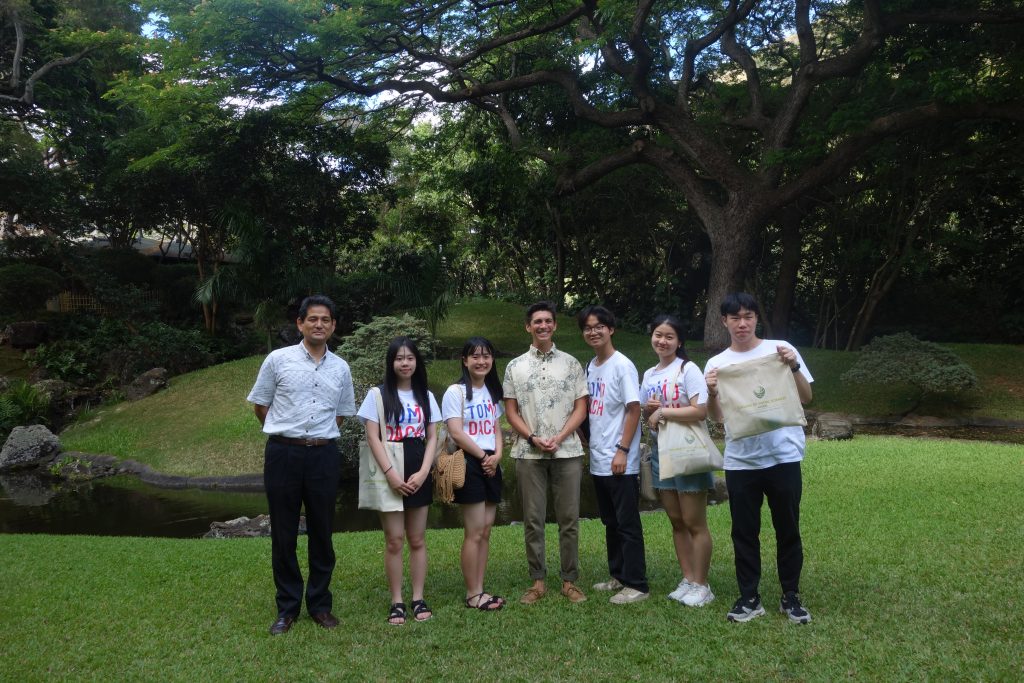
Photo credit: University of Hawaiʻi at Mānoa
Five TOMODACHI Boeing Keio SFC Entrepreneurship Seminar students, who were selected at the final presentation day, completed their U.S. study tour. During the four days of the U.S. study tour (July 30 – August 4), they planned and implemented four types of curriculum: “Well-being”, “Visit”, “Workshop” and “Fieldwork.”
On July 31, 2023, Professor of Economics Nori Tarui and Director of Civic Engagement Ulla Hasager, both from the University of Hawaiʻi at Mānoa’s College of Social Sciences, welcomed the students for a campus tour and workshop.
“We are extremely happy to host the TOMODACHI students for two years in a row!” said Mr. Tarui. “Japan and Hawaii share many sustainability challenges, such as the sea level rise and clean energy transitions,” he continued. “We hope the students will gain insights on their projects through their visit to the States.”
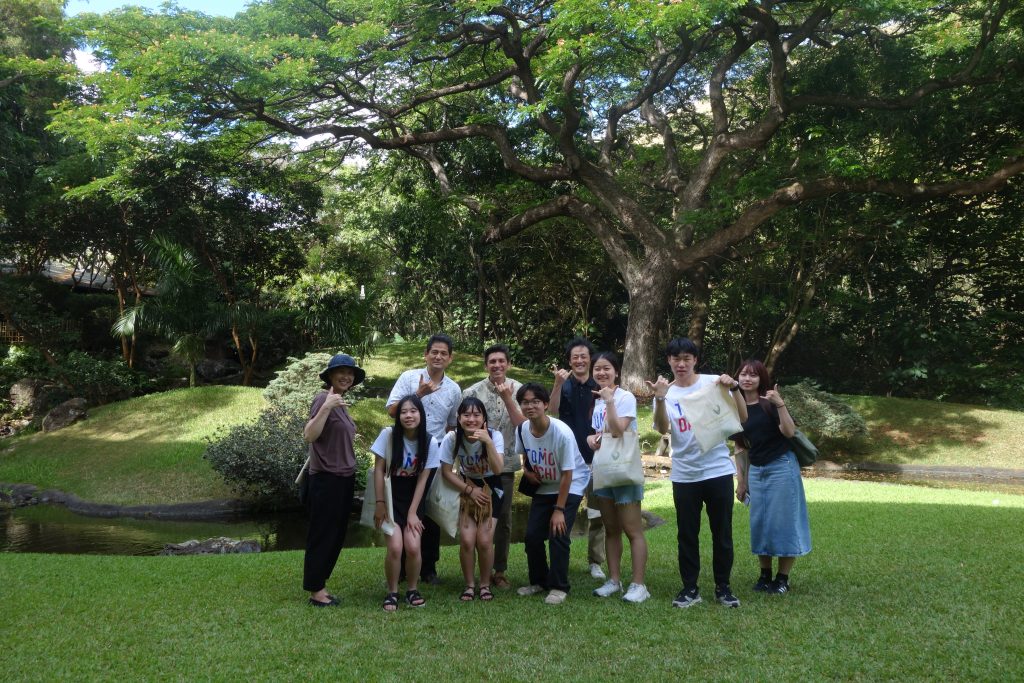
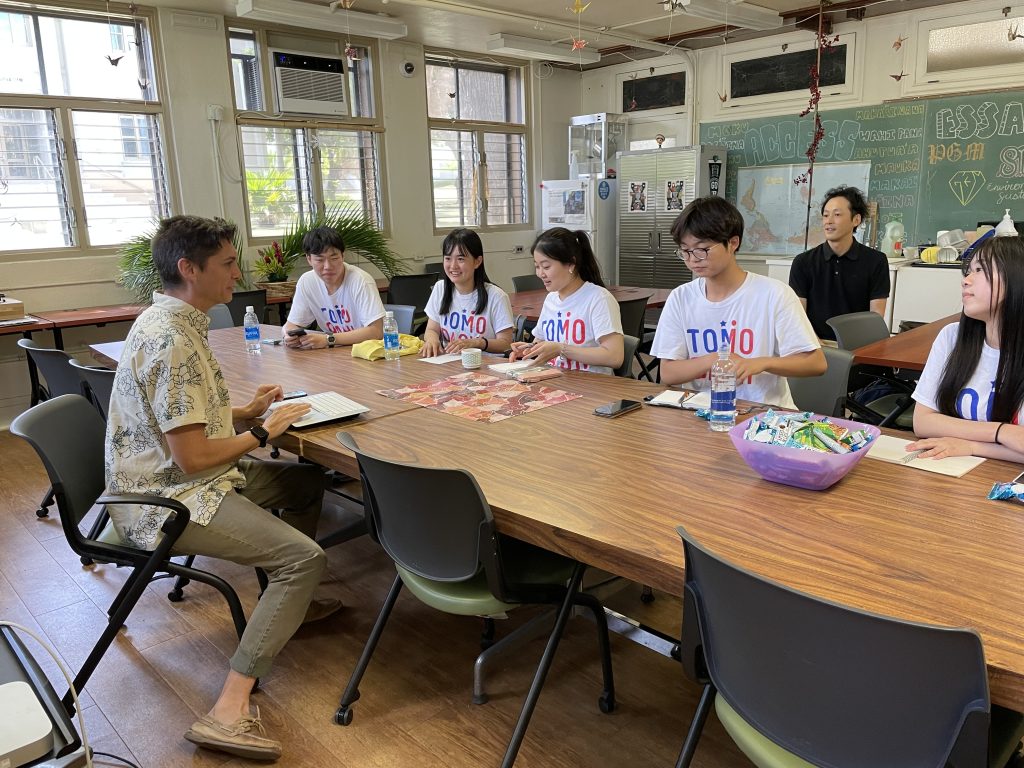
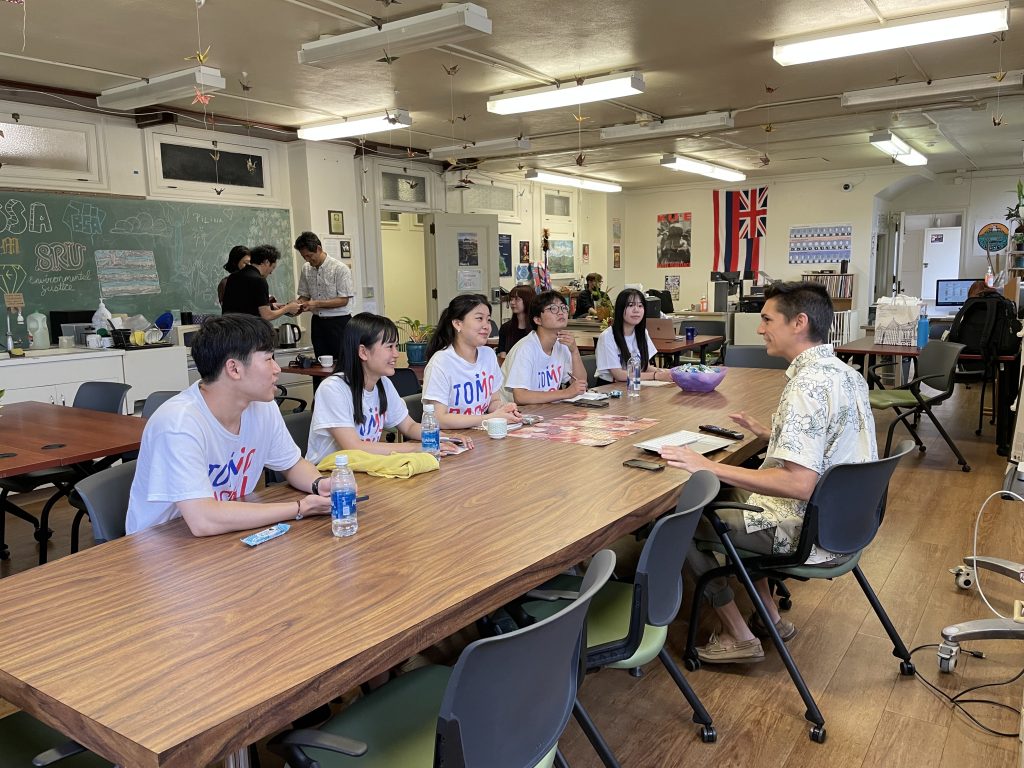
Photos credit: Keio and University of Hawaiʻi at Mānoa
Dr. Ruben E. Campos III led the session summarizing Hawaiian history and culture, with a special focus on the “Peoples of Hawaii,” by exploring how people with diverse ethnic backgrounds came to the Islands over the course of history, forming Hawaii’s multicultural communities today.
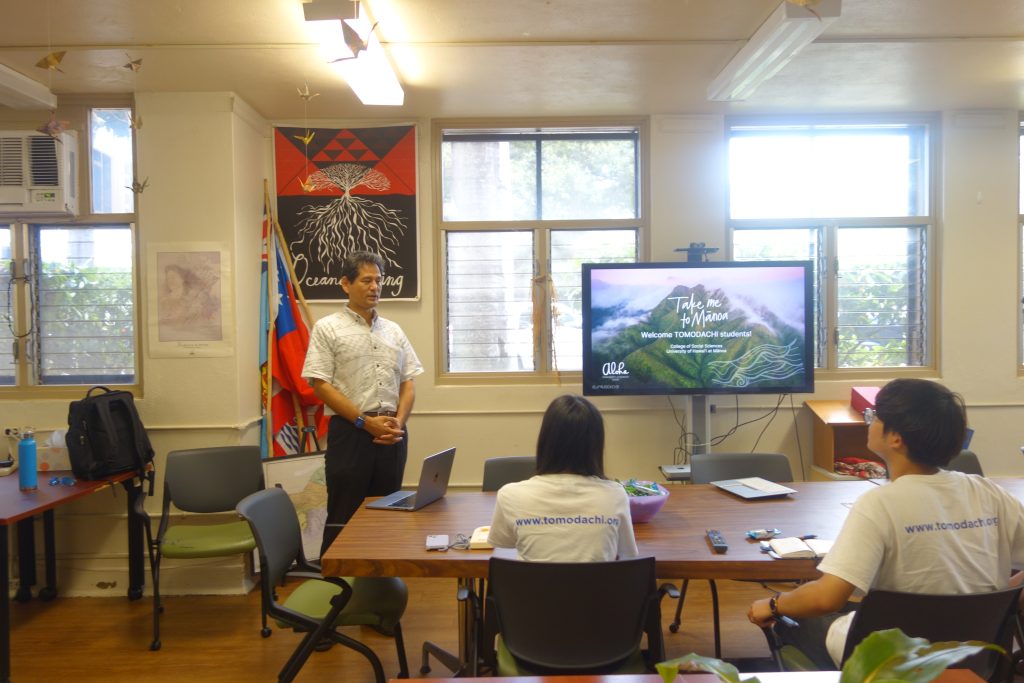
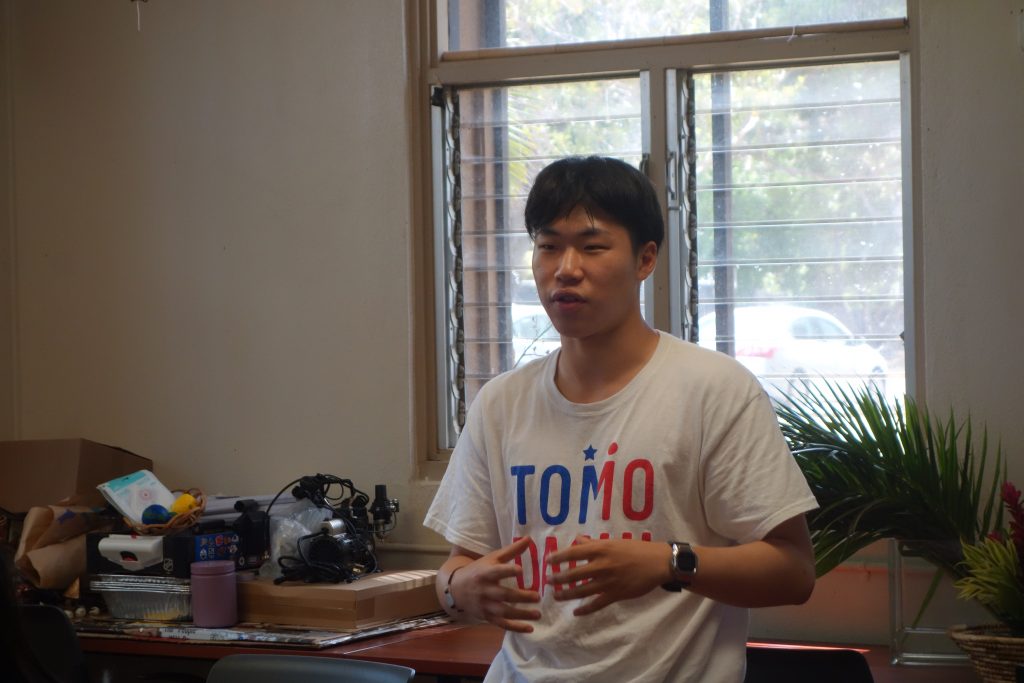
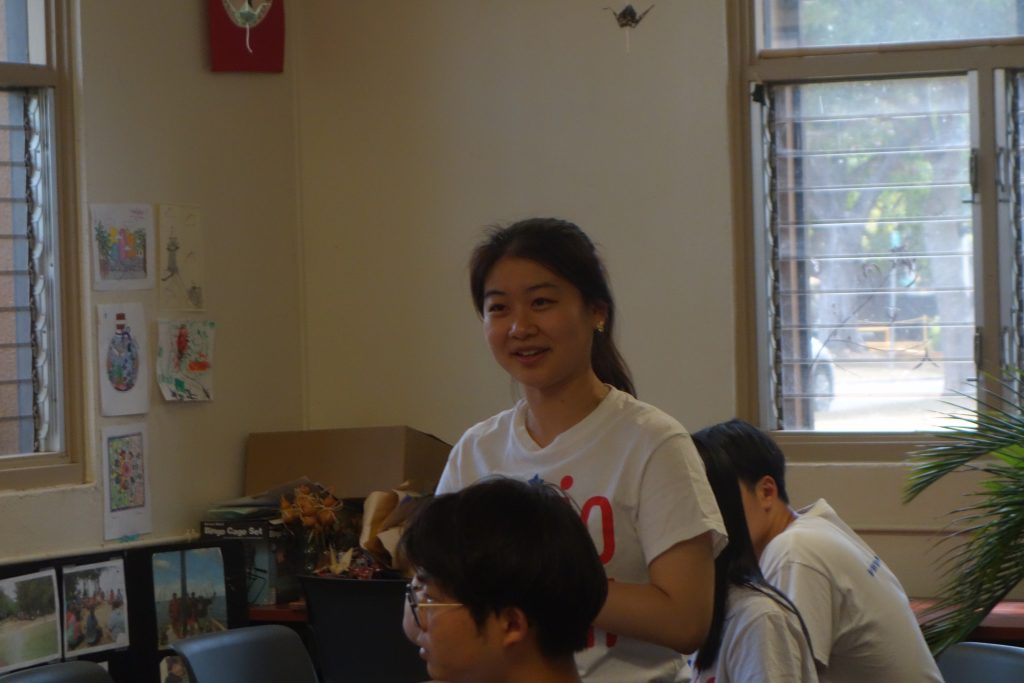
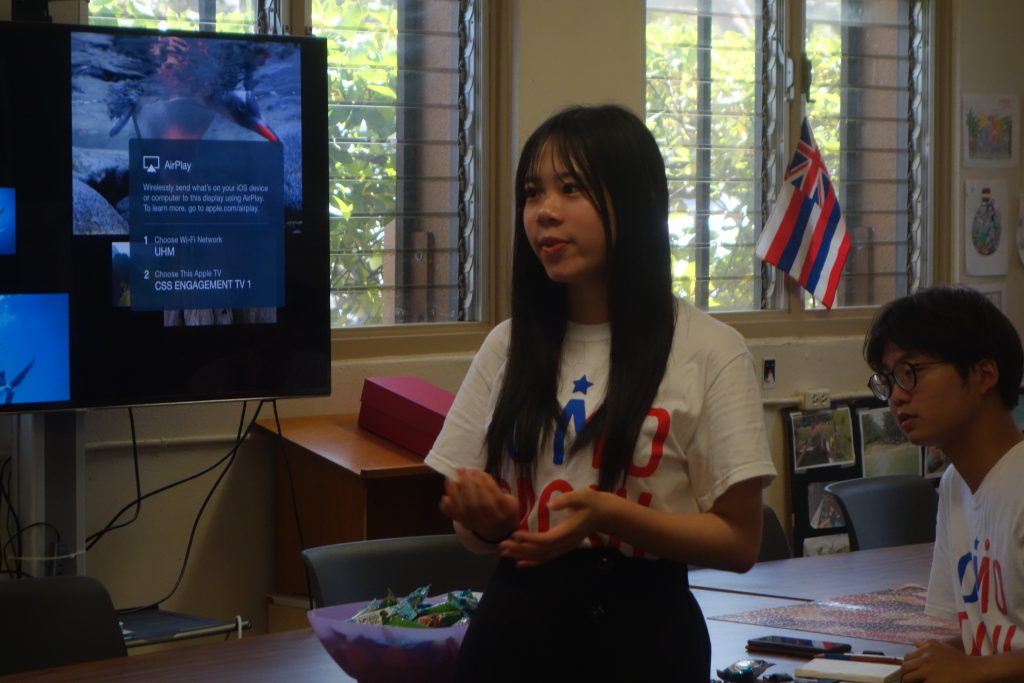
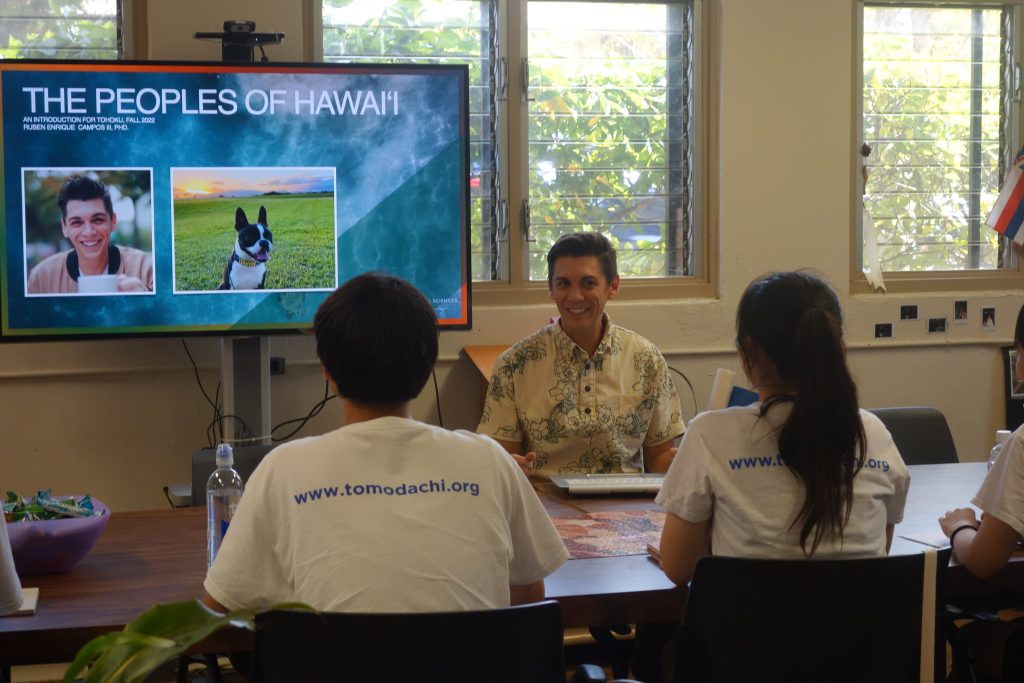
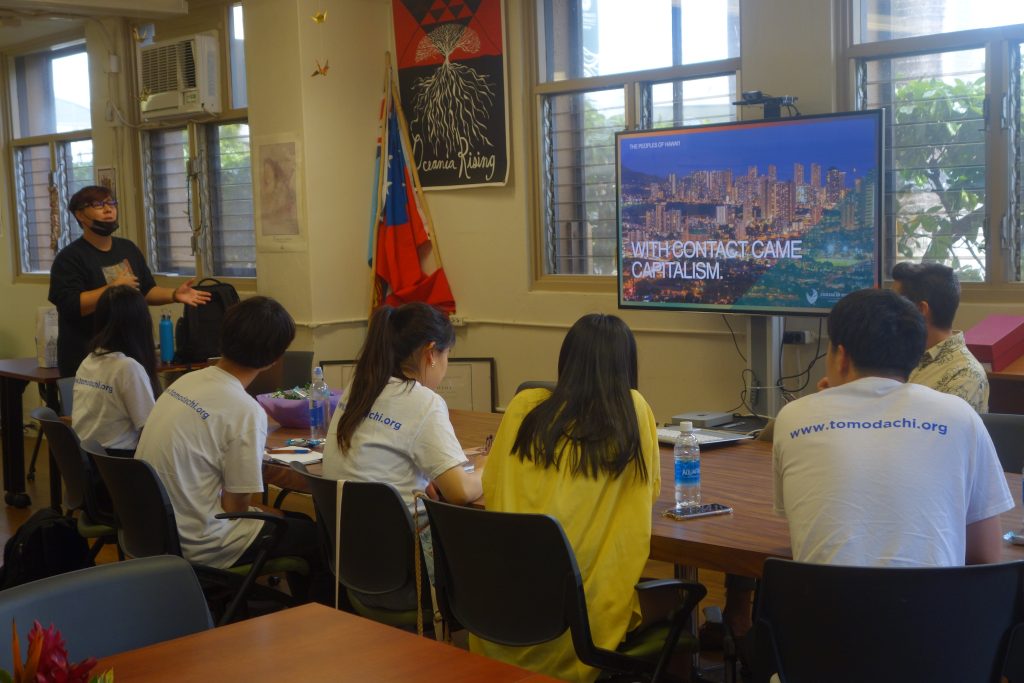
Photos credit: Keio and University of Hawaii Manoa
Dr. Campos concluded the lecture by saying, “I hope with this quick, and no doubt brutal, introduction, you now understand that Hawaii is a very complex place. There is no singular people, singular culture or even a singular past or future here. I want you all to think back to the first words you shared with your neighbor. Share a new word with one another. Discuss the differences between these word sets. If you are feeling brave, share with the class your words and what you realized from their comparison.”
The students asked a few challenging questions after Ruben’s lecture. For example, one student asked what lessons Hawaii could provide regarding how different peoples could get along well; and what can be done for marginalized people such as indigenous Hawaiians to have better representation in the State. The College’s coordinators were all impressed with the depth of the students’ questions.
All five students were glad that their time during the U.S. trip was well spent and meaningful.